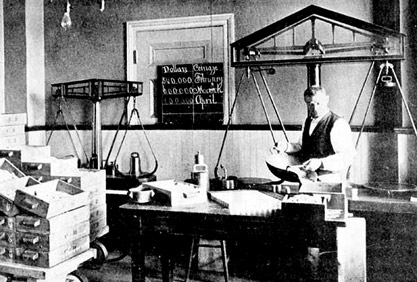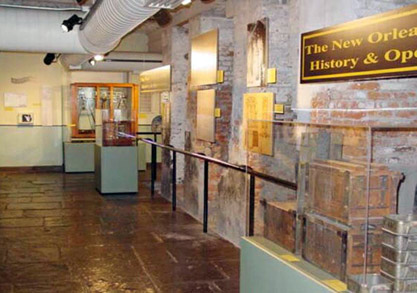New Orleans Mint Gold Bullion Scales

The role of the U.S. Mint buildings has been sometimes been interpreted as marginal in both the financial and architectural histories of the United States. As this online exhibition demonstrates, however, the Mints at San Francisco, Carson City, Denver, and Philadelphia; all designed by the Supervising Architects Office (SAO), and those at New Orleans, Charlotte, and Dahlonega, have played important roles in their community's history and have been partly cause and partly consequence of the changing fortunes of the nation's economy.
Carson City Mint architect's building section drawing

This exhibition hopes to foster further study of the Mints from an architectural history perspective to encourage greater understanding of the Supervising Architect's Office (SAO) role in American public architecture. Only recently have efforts been made to place its work inside a richer architectural-historical discourse, yet the SAO still remains understudied.
San Francisco Mint exterior, main entrance

Foremost among the historic preservation lessons that the Mint buildings can teach us is the role of the building itself in defining a possible new function, or adaptive reuse. The most successful examples of reuse, in terms of public appreciation, use the building as an "historic palimpsest", that is, where the accretions and changes over the building's lifetime are left visibly evident. New Orleans and Carson City have done this admirably. In the case of New Orleans, when the building is converted to a museum and is used as a document to demonstrate its own history, the community gains an important resource for insight into its past.
San Francisco Mint, interior view, adjusters room

Because the Mint buildings were built to house both office and manufacturing spaces, adaptive reuse challenges owners and designers to balance retaining the expression of these functions with new program demands. In fact, a central question preservationists face with the Mints is to what extent this dichotomy of original functions will be expressed and celebrated or suppressed and removed.
New Orleans Mint restored as a museum

Where the Mints have been converted to museums, the challenge is resolved in favor of expression of this dichotomy, since a museum by its nature is capable of integrating the building's past into its new function. It is worth following the ongoing renovations at the San Francisco Mint to learn how that city deals with these challenges. If the city chooses to disregard the dual functions of the original building it would still be possible achieve a vital reuse; but what a greater achievement it will be if traces of some of these original uses are physically present and accessible to the public.
